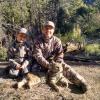-
Content Count
3,091 -
Joined
-
Last visited
-
Days Won
1
Posts posted by willhunt4coues
-
-
Get the correct tool to measure how much YOU BUMP though. If not you may OVER due it.
It does sound like you may not be bumping enough. But JUST TAKING the die and turning it can over due what you don't want to.
Get this comparator set so you know for a fact to only bump .002 to .003.
-
I knew you guys were not arguing. Sometimes I can not put my thoughts out like I mean to say like .308 did with the Fact quotes. I really don't factor in Coriolis unless I get past 1000 which is not much. Last time I did shout out at 1200 I had a 4" group and stopped there,,, I did not want it to get worse,,,LOL. Oh and a perfect bulls eye in 8 mph winds. I was impressed and probably could not do that again on a calm day.
I really do not see myself shooting past 800 while hunting and 800 is pushing it because I know I usually can get closer. The only reason I would take a shot at 800 on a Coues is if he was about to top a hill, no wind, and all the stars aligned. I have faith I would hit but man could not live with myself if I did miss.
-
What velocity are you getting with you creed and with what bullet?
I am at 2800 with the Berger VLD 140 hunting bullet. BC before litz did the correction this last week was .313 G7 all I use.
-
A few key points regarding the Coriolis effect.
That is not exactly accurate. (pun intended) Coriolis is pretty complicated when it comes to figuring exact displacement of a shot. For example... it has more of an effect near the equator than it would near a pole (North or South), a shot directly north or south will print substantially more movement then one fired directly east or west.Everyone north of the equator the shot will always be right no matter which way you are facing due to coriolis.
Spin drift is more of a constant, but can change with altitude/air density.
I feel when speaking about the vast majority of "long range shooters" .3 MOA deviation at ranges of or exceeding 1000 yds would be EXTREMELY hard to pin down to one culprit or eliminate. An even slightly canted scope or rifle could easily be responsible for 1/2 MOA deviation, not to mention the multitude of other factors like wind, mirage, air density, spin drift, etc, or a loose nut behind the trigger.
If a guy controls what he can, and coriolis was the only thing unaccounted for then he will likely hit close enough in any hunting situation. I watch lots of long range hunting shots being made (youtube, DVDs, and TV) where coriolis is the least of the guys worries.
I guess what I am trying to say is if you do your due diligence at the range and at the loading bench, coriolis will not effect anything but serious extreme range shooting.
BIGBROWNS, Thanks for posting. I hope you get that last little bit worked out and put the hammer on a bear!
Fact: There is a greater horizontal effect the closer you get to the poles.
Fact: The horizontal effects become less as you get closer to the equator.
Fact: Shots east and west yield a vertical component.
Fact: Projectiles fired in the Northern Hemisphere will always appear to drift right regardless of direction of fire and left in the Southern Hemisphere.
Fact: shots north and south show nearly the same horizontal deviation as those east and west.
If you were 500 yards south of the equator shooting across it to a target 500 yards north of the equator, there would be zero effect.
This is what I was meaning in my first post
Fact: Projectiles fired in the Northern Hemisphere will always appear to drift right regardless of direction of fire and left in the Southern Hemisphere.
My creedmoor like other have said at most HUNTING DISTANCES will not drift much if any at all. But at those target shots PAST 1300 oh ya.
-
WOW thats light and WOW thats cheap. This is probably the best chassis system I have seen yet FOR HUNTING. Good work guys. Nicely done. May have to sell my 1000.00 stock for one of these.
Do you make it in just short action or can you also get long action?
-
 1
1
-
-
I know there are LOYAL Vortex fans out there but I promise you will be DOWN grading and wont be able to see anything at all.
-
 1
1
-
-
I love that you can actually hold it and range out to 1500 yards JUST HOLDING IT. Put it on a tripod and I have reached 2400 with it.
This rangefinder is the BEST investment for any long range hunter/shooter. It is very accurate.
-
 1
1
-
-
I am glad you finally sealed the deal. I wish I could have helped. Maybe could have got another 107". I swear you are the luckiest guy I know. LOL.
-
 1
1
-
-
-
Congrats buddy. I am glad that the gun worked for ya so well. Again congrats on a stud.
-
-
I like the 511 Tactical pants for catclaws. They have rip stop and I never feel the cat claw anytime I wear them.
-
IMR powders are usually NOT temperature stable. It will say if it is or isn't. Hogdon extreme line usually ARE temperature stable. Shooting long range gets tricky when if you chrono your load in summer will be one speed and will be completely different usually lower in winter being that your FPS can change DRASTICALLY. So lets say I use an IMR 4895 in a .308 165gn bthp. In summer I may get 2600 fps but in winter 2500 fps. Sometimes it will change a lot and sometimes it will be very little. The Hogdon line no matter what temp you are in will still be the same. I did this test last year with a .308 and the IMR 4895 and between 25 degrees it changed 40 fps. So needless to say the IMR 4895 is the worst. If you are shooting short range then this really does not matter depending on range.
-
 1
1
-
-
I use Nosler because of such tight tolerances I am on my 20th firing on one set of 100. I also have Norma but the Nosler is better. Hornady is okay but not NEAR as good as nosler or norma. I have had the primer pockets get loose after 2 firings thats not worth it to me. Plus with hornady you have to weigh sort and the specs are out all around.
Nosler
https://www.precisionreloading.com/cart.php#!l=NS&i=44824
http://store.thirdgenerationshootingsupply.com/browse.cfm/4,20816.html
http://shop.nosler.com/nosler-brass/brass/noslercustom-brass-6-5mm-creedmoor.html
http://www.brunoshooters.com/category/brass_nosler.html
http://www.midwayusa.com/product/617478/nosler-custom-reloading-brass-65-creedmoor-box-of-50
Norma
https://www.precisionreloading.com/cart.php#!l=NM&i=20265135
Hornady
-
I really dont mind the shine but dont want deer to see it and spook.
-
 1
1
-
-
I have used both Krylon but then upgraded to the duracoat. Duracoat worked great but I am in no hurry to do my custom with Duracoat even though I know it would be great. I guess I will wait till after deer season to do mine. Yours looks good me likey.
-
Layers are the key to the Kuiu and Sitka camo. I have a few layers on while glassing and shed the outer layer to move but when I stop again for long periods I layer back up. Both Kuiu and Sitka work great.
-
I seen that Gun bot has not been updating like it use to. I have emailed the guy numerous times with no response. This was the easiest to turn too. Now I guess it will just be another dead site. I will look around for some for you.
-
did you sand blast? or just use sanding paper?
-
What paint are you using to paint with? I have everything to do mine with duracoat even a 400.00 airbrush just don't know if I want to touch it.
-
-
if you ever need any info on a specific cartridge just email Berger and tell them the grain of bullet and case and they will email all info. Saves money from having to buy the book.
-
Happy Birthday Gino
-
They would really like that salt even more if it was not a block. Get you some granulated salt and dig a hole and bury it. Coues love to eat the dirt.
-
 4
4
-



Stiff bolt close? Why
in Rifles, Reloading and Gunsmithing
Posted · Report reply
1/8 of a turn will be too much. When bumpiing you will be doing JUST THAT BUMPING. All dies are different. I noticed on mine I made little marks at 1/16" at the bottom of the die. Each 1/16" was about .001 bumping so you BARELY even turn the die.
I tighten my lock ring then lock the lock ring down then I size, if not right loosen lock ring and barely turn 1/16" then tighten lock ring then re-tighten the die. keep doing this till you get a bump.
I take all my fired brass and see if any are tight in chamber if so take note of the CBTD (cartridge base to datum) usually this will be the same number over and over letting you know your chamber CBTD. Then set in Die to only BUMP .002 to .003. I have found .002 is VERY accurate and every round chambers perfectly. Watch some videos online to understand better. I will try and find some for you.